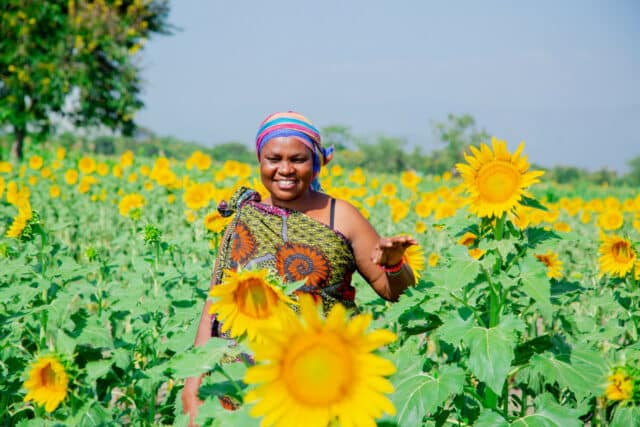News
6 July 2018
Larger fingerlings key to scaling up Kenya’s aquaculture industry

Increasing the size of fingerlings (young fish) stocked reduces fish farmers’ production cycles and input costs, which improves farmers’ productivity and profits, a new study by Farm Africa and WorldFish reveals.
The study carried out feed versus strain trials on three strains of Nile tilapia (O. niloticus), which were fed local and imported feeds, on farms in two different climatic locations: Kisumu, western Kenya, and Karatina, central Kenya. The findings revealed that releasing larger hatchery-raised fingerlings, which weigh five grams or more, into fish farm ponds reduces farmers’ expenditure and speeds up production.
The effect of the size of fingerlings at stocking, when fingerlings are released into ponds, was biggest in central Kenya, where the water temperature was below the optimum range for rearing Nile tilapia.
At the study’s launch in Nairobi, Sven Genschick, a researcher at WorldFish said: “For fish farming in central Kenya to thrive, technologies such as greenhouses, larger fingerlings and selective breeding for improved cold tolerance need to be developed.”
He added that in western Kenya, where the water temperature is almost optimum, larger fingerlings and quality feed should be used to optimise aquaculture production.
In both warm and cool regions, the trial established that pelleted feeds should be used instead of mash. The study found that compared to pellet-fed fish, mash-fed fish put on weight at a slower rate, which slows down meat production and eats into farmers’ profits.
The experiment also suggested that farmers should source fingerlings from local hatcheries. Results showed that fingerlings produced and farmed in the same geographic area are more productive, as they are better adapted to the local environment.
This comes in the wake of a deteriorating local aquaculture sector that has seen the influx of Chinese imports in the market, a move that the government asserts is necessary as the “country only imports to fill the gap in supply” and that “lack of fish feeds is a key bottleneck.”
“The major obstacle experienced by fish farmers is the extremely high cost of feeds. If that was to be addressed through government subsidies, the level of production would soar, filling the existing supply deficit,” said Arnoud Meijberg, Team Leader of Farm Africa’s Kenya market-led aquaculture programme.
He noted that the private sector should seize this opportunity and develop high-quality fingerling and feed businesses that provide farmers with access to cost-effective inputs.
The growth trial, which was conducted by Farm Africa’s Kenya market-led aquaculture programme and WorldFish, was funded by the Embassy of the Kingdom of the Netherlands in Nairobi.




